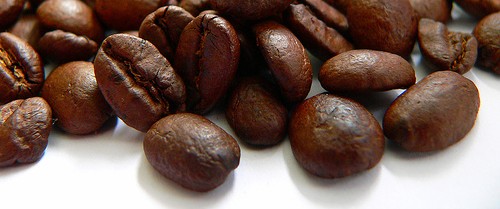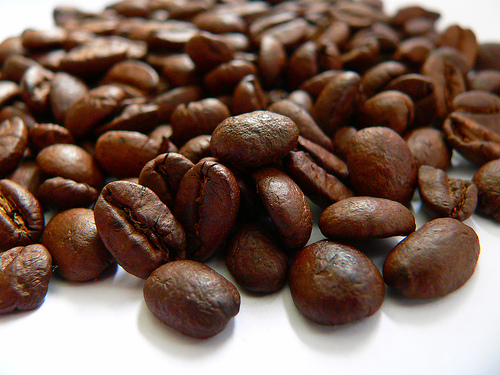Caffeine Tolerance and withdrawal
 Cas No. [58-08-2]
 Because caffeine is primarily an antagonist of the central nervous
system's receptors for the neurotransmitter adenosine, the bodies of
individuals who regularly consume caffeine adapt to the continual
presence of the drug by substantially increasing the number of
adenosine receptors in the central nervous system. This increase in
the number of the adenosine receptors makes the body much more
sensitive to adenosine, Because caffeine is primarily an antagonist of the central nervous
system's receptors for the neurotransmitter adenosine, the bodies of
individuals who regularly consume caffeine adapt to the continual
presence of the drug by substantially increasing the number of
adenosine receptors in the central nervous system. This increase in
the number of the adenosine receptors makes the body much more
sensitive to adenosine,
 with two primary consequences.First, the
stimulatory effects of caffeine are substantially reduced, a
phenomenon known as a tolerance adaptation. Second, with two primary consequences.First, the
stimulatory effects of caffeine are substantially reduced, a
phenomenon known as a tolerance adaptation. Second, because these
adaptive responses to caffeine make individuals much more sensitive
to adenosine, a reduction in caffeine intake will effectively
increase the normal physiological effects of adenosine, resulting in
unwelcome withdrawal symptoms in tolerant users. because these
adaptive responses to caffeine make individuals much more sensitive
to adenosine, a reduction in caffeine intake will effectively
increase the normal physiological effects of adenosine, resulting in
unwelcome withdrawal symptoms in tolerant users.
Other research questions the idea that up-regulation of adenosine
receptors is responsible for tolerance to the locomotor stimulant
effects of caffeine, noting, among other things, that this tolerance
is insurmountable by higher doses of caffeine (it should be
surmountable if tolerance was due to an increase in receptors), and
that the increase in adenosine receptor number is modest and does
not explain the large tolerance which develops to caffeine.
Caffeine tolerance develops very quickly, especially among heavy
coffee and energy drink consumers.
 Complete tolerance to sleep
disruption effects of caffeine develops after consuming 400 mg of
caffeine 3 times a day for 7 days. Complete tolerance to subjective
effects of caffeine was observed to develop after consuming 300 mg 3
times per day for 18 days, and possibly even earlier. In another
experiment, complete tolerance of caffeine was observed when the
subject consumed 750–1200 mg per day while incomplete tolerance to
caffeine has been observed in those that consume more average doses
of caffeine. Complete tolerance to sleep
disruption effects of caffeine develops after consuming 400 mg of
caffeine 3 times a day for 7 days. Complete tolerance to subjective
effects of caffeine was observed to develop after consuming 300 mg 3
times per day for 18 days, and possibly even earlier. In another
experiment, complete tolerance of caffeine was observed when the
subject consumed 750–1200 mg per day while incomplete tolerance to
caffeine has been observed in those that consume more average doses
of caffeine.
Because adenosine, in part, serves to regulate blood pressure by
causing vasodilation, the increased effects of adenosine due to
caffeine withdrawal cause the blood vessels of the head to dilate,
leading to an excess of blood in the head and causing a headache and
nausea. Reduced catecholamine activity may cause feelings of fatigue
and drowsiness. A reduction in serotonin levels when caffeine use is
stopped can cause anxiety, irritability, inability to concentrate
and diminished motivation to initiate or to complete daily tasks; in
extreme cases it may cause mild depression. Together, these effects
have come to be known as a "crash".
 Withdrawal symptoms—possibly including headache, irritability, an
inability to concentrate, drowsiness, insomnia and pain in the
stomach, upper body, and joints—may appear within 12 to 24 hours
after discontinuation of caffeine intake, peak at roughly 48 hours,
and usually last from one to five days, representing the time
required for the number of adenosine receptors in the brain to
revert to "normal" levels, uninfluenced by caffeine consumption.
Analgesics, such as aspirin, can relieve the pain symptoms, as can a
small dose of caffeine. Most effective is a combination of both an
analgesic and a small amount of caffeine. Withdrawal symptoms—possibly including headache, irritability, an
inability to concentrate, drowsiness, insomnia and pain in the
stomach, upper body, and joints—may appear within 12 to 24 hours
after discontinuation of caffeine intake, peak at roughly 48 hours,
and usually last from one to five days, representing the time
required for the number of adenosine receptors in the brain to
revert to "normal" levels, uninfluenced by caffeine consumption.
Analgesics, such as aspirin, can relieve the pain symptoms, as can a
small dose of caffeine. Most effective is a combination of both an
analgesic and a small amount of caffeine.
 This is not the only case where caffeine increases the effectiveness
of a drug. Caffeine makes pain relievers 40% more effective in
relieving headaches and helps the body absorb headache medications
more quickly, bringing faster relief. For this reason, many
over-the-counter headache drugs include caffeine in their formula.
It is also used with ergotamine in the treatment of migraine and
cluster headaches as well as to overcome the drowsiness caused by
antihistamines.
This is not the only case where caffeine increases the effectiveness
of a drug. Caffeine makes pain relievers 40% more effective in
relieving headaches and helps the body absorb headache medications
more quickly, bringing faster relief. For this reason, many
over-the-counter headache drugs include caffeine in their formula.
It is also used with ergotamine in the treatment of migraine and
cluster headaches as well as to overcome the drowsiness caused by
antihistamines.

>>
New Product
Introduced :
Oseltamivir
Phosphate,
Phenyl Propanolamine,
Phenylephrine,
Etafedrine

|

 We all know that one of the most
powerful chemical compounds found in both coffee and tea is
caffeine. Has caffeine become an important part of your daily life?
Did you know We all know that one of the most
powerful chemical compounds found in both coffee and tea is
caffeine. Has caffeine become an important part of your daily life?
Did you know
Article : What Is Caffeine?
 Caffeine is a drug that is naturally
produced in the leaves and seeds of many plants. It's also produced
artificially and added to certain foods. Caffeine is defined as a
drug because it stimulates the central nervous system, causing
increased alertness. Caffeine gives most people a temporary energy
boost and elevates mood. Caffeine is a drug that is naturally
produced in the leaves and seeds of many plants. It's also produced
artificially and added to certain foods. Caffeine is defined as a
drug because it stimulates the central nervous system, causing
increased alertness. Caffeine gives most people a temporary energy
boost and elevates mood.
Caffeine is in tea, coffee, chocolate, many soft drinks, and pain
relievers and other over-the-counter medications. In its natural
form, caffeine tastes very bitter. But most caffeinated drinks have
gone through enough processing to camouflage the bitter taste.
Teens usually get most of their caffeine from soft drinks and energy
drinks. (In addition to caffeine, these also can have added sugar
and artificial flavors.) Caffeine is not stored in the body, but you
may feel its effects for up to 6 hours.
![Caffeine Cas No. [58-08-2]](caffeine/CAFFEINE%20LOGO%20SMALL.bmp)
|


